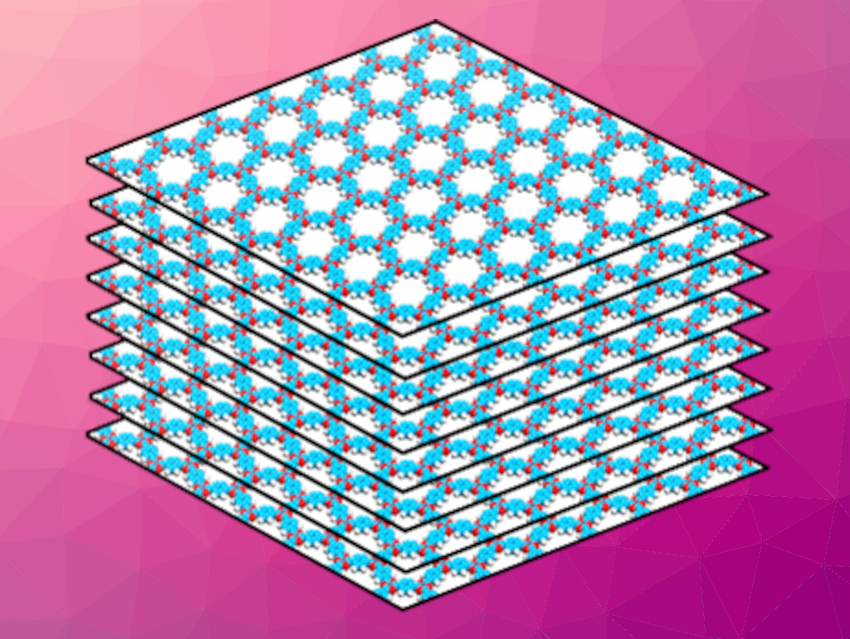Covalent triazine frameworks (CTFs), constructed using robust aromatic triazine linkages, have great potential in energy and catalysis applications. However, little is known about the polymerization of CTFs, and current synthetic methods require harsh reaction conditions that can result in partial carbonization.
Yuxi Xu, Westlake University, Hangzhou, China, and colleagues have developed a strategy for the rapid, microwave-assisted synthesis of highly crystalline, semiconducting CTFs, using a small amount of superacid (CF3SO3H) as a catalyst and without a need for any additional organic solvents. The team used 1,3,5-tricyanobenzene (TCB), 1,4-dicyanobenzene (DCB), and 4,4′-dicyano-1,1′-biphenyl (DCBP) as the starting monomers for a cyclotrimerization reaction that gives the corresponding CTFs. They found a polymerization mechanism in which the monomers polymerized directly into periodic 2D molecular sheets within 10 s in the nucleation step, and grew further into layered crystalline frameworks within 20 min (pictured below).

A ball-milling method was then used to exfoliate the layered bulk CTFs into single-layer and few-layered 2D triazine polymer nanosheets, giving photocatalytic materials with good hydrogen evolution performance. The synthesis method is scalable and could be useful for the preparation of other organic porous polymers.
- Rapid, Ordered Polymerization of Crystalline Semiconducting Covalent Triazine Frameworks,
Tian Sun, Yan Liang, Yuxi Xu,
Angew. Chem. Int. Ed. 2021.
https://doi.org/10.1002/anie.202113926

![Synthesis of [c2]Daisy Chains via Mechanochemistry](https://www.chemistryviews.org/wp-content/uploads/2025/04/202504_RotaxanesWithSolidStateMechanochemistry-125x94.png)

